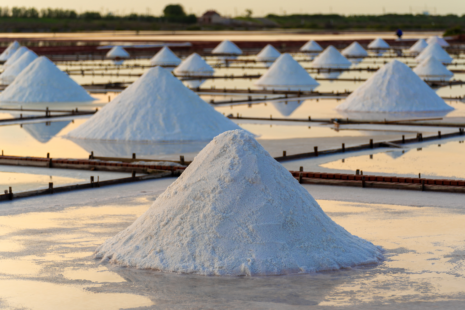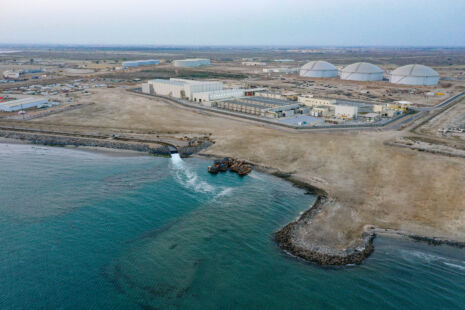
Sustainable technologies for ocean conservation
We live on a blue planet. The oceans are the lungs, producing 50% of the Earth’s oxygen and absorbing 30% of its carbon dioxide. They are the source of many foods and medicines. They form a fundamental part of the biosphere and are the basis of much of the world economy, supporting different sectors such as tourism, fishing, and international shipping.
However, man’s hand is causing the oceans to face unprecedented threats. An estimated 11 million tonnes of plastic waste end up in the world’s oceans every year. Eutrophication contributes to dead zones; nearly 80% of the world’s sewage is discharged untreated.
Climate change is also altering the mechanics of surface ocean currents, making them faster and thinner, affecting the transport of nutrients needed by different marine organisms and micro-organisms. Faster currents may also affect how the ocean removes carbon and heat from the atmosphere and protects the planet from excessive global warming.
The oceans are also a raw material for the production of drinking water. Desalination can only be done with water from the seas and oceans. This is why Sustainable Development Goal 6 on clean water and sanitation must go hand in hand with SDG 14 on underwater life.
Water scarcity already affects more than 40% of the world’s population. Solutions such as desalination are increasingly needed as the world’s freshwater supplies dwindle, but innovation in brine management is required.
Technology and new uses for brine
Brine is a by-product or the end product generated in the desalination process and consists of several components. Brine has a salinity above 55,000 mg/L total dissolved solids (TDS) in the stream, and its chemical characteristics depend on several factors, such as the quality of the feed and permeate water, the type of desalination process, the pre-treatment method and the cleaning procedures used. Heavy metals, organic contaminants, solid acids or bases, antiscalants, coagulants, and biocides add complexity to the brine solution.
New desalination plants must establish proper brine management to be competitive in the market and establish a sustainable relationship with the environment.
Traditional forms of brine treatment, such as chemical/electrochemical coagulation, chemical oxidation, chemical precipitation, or biological assimilation, have been replaced by more modern technologies.
Another negative side of brine is the water that is wasted in the process. A leading technology for brine management and resource recovery is the Zero Liquid Discharge (ZLD) scheme. This strategic engineering approach to waste management ensures complete recovery of the liquid and the minerals, leaving the solid waste for disposal. The main driver of this innovation is the quest for maximum recovery and reuse of water in drylands and easy and convenient removal of solid waste, enabling a circular economy and zero wastewater discharge associated with pollution of the aquatic environment.
On the other hand, direct osmosis technology is being used for freshwater and mineral recovery, which uses the osmotic pressure gradient across the membrane to separate the feed water and allow its permeation. This technology has numerous advantages, such as cost-effectiveness, low energy consumption, reduced membrane fouling, high water flux, and remarkable rejection rates. It can be applied to brines with high salt content (<200 g/l). However, its large-scale implementation is still in a growth phase.
Other innovations already on the market are electrodialysis technologies, membrane distillation, or hybrid processes combining different technologies.
For energy recovery from brine, technologies such as pressure-retarded osmosis (PRO), electrodialysis reversal (EDR), and capacitive mixing (CapMix) have proven to be very relevant. However, they still require further development to improve their economic efficiency and robustness.
Technological innovations are essential to conserve ocean biodiversity and to establish a more sustainable economic relationship with the marine environment. We are in the process of transforming a historical environmental problem into an economic opportunity, and continued research in desalination is opening new technological windows for this.
There are economic opportunities associated with brine; apart from its use as commercial salt and in fish processing systems, it can be used for aquaculture, to generate electricity, or to recover the metals contained in it, such as magnesium, gypsum, calcium, potassium, chlorine or lithium. The income obtained from brine, such as mineral recovery and waste conversion into value-added products such as fertilizers, are alternatives for a more profitable model.

At Almar Water Solutions, we invest in technology and specialized equipment to develop increasingly sustainable and efficient structures, protecting the environments in which they are located. The Industrial Water and Technology division works to bring innovation to the field, combining different technologies and processes in the collection, treatment, and distribution of water.
Our Shuqaiq 3 desalination plant includes a waste treatment system to minimize pollutants that may be discharged into the sea. In addition, solutions have been implemented to reduce the use of chemicals that can have an environmental impact, such as sodium hypochlorite. From its design, processes were implemented to make Shuqaiq 3 an innovative and sustainable desalination plant. All these efforts were not only carried out to be implemented after the completion of the plant but also during the construction phase.

At both the municipal and industrial levels, the present and future water infrastructures must rely on clean technologies to move forward with Sustainable Development Goals 6 and 14.
It is necessary to increase scientific knowledge of the marine environment and to strive to reduce water pollution, including waste from land-based activities and nutrient pollution, thus maintaining certain ideal conditions such as temperature and chemical composition of the oceans. It is essential to adapt water management and look for alternatives that mitigate the effects of traditional procurement mechanisms and, at the same time, contribute to meeting the climate challenge.
By protecting our ocean, we protect our future.

